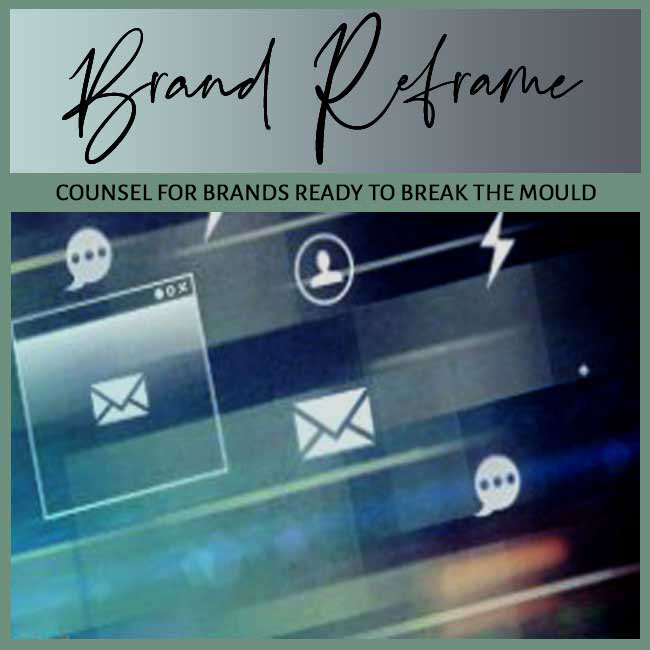
BY: SHOBHA PONNAPPA | BRAND BREAKTHROUGH STRATEGIST | 45 YEARS | 125+ CLIENTS
A brand story is the narrative that explains why your brand exists, what it stands for, and why it matters to the people you serve. It is more than a tagline or an about page; it is the emotional and strategic thread that connects your past, present, and future. A strong brand story makes your business memorable and meaningful. Without one, brands feel like faceless products fighting for attention. Customers crave stories that show purpose and humanity. A coherent story gives them a reason to care beyond price or features.
In my work with companies across industries, I’ve seen that storytelling is the glue that holds positioning and strategy together. Brands with strong stories inspire loyalty because people love to share and be part of their journey. Internally, stories guide decisions and energise teams. A weak story leaves marketing hollow and culture uninspired. It becomes harder to differentiate, build trust, or rally employees. Over time, the brand drifts without a clear centre.
Today’s audiences are overwhelmed by products and information. They connect not just to what you sell but to why you exist. A compelling story cuts through noise and earns attention. Social media and content marketing reward brands with authentic, sharable narratives. Without a story, campaigns feel transactional and forgettable. Audiences disengage when there is no emotional thread.
Investors and partners also evaluate the story behind a business. A strong narrative signals vision and long-term potential. It shows you understand your customers and market context deeply. Great stories attract capital, talent, and advocacy. In competitive spaces, story often becomes the real differentiator. Clarity and emotion together create momentum.
Every great brand story begins with truth about why it started. Audiences love to know the spark that led to its creation. Authenticity makes stories believable and relatable. Invented or exaggerated tales erode trust when uncovered. Founders should reflect on genuine moments of insight, frustration, or inspiration. Real beginnings create natural emotional hooks.
Leaders should craft this origin into a simple, resonant narrative. Avoid corporate jargon or over-polish. Instead, let vulnerability and humanity show. True stories create connection faster than perfect ones. They remind customers and teams of the mission’s heart. Over time, this origin becomes an enduring anchor.
Purpose explains the bigger impact your brand aims to have. It frames the story around what you change or improve in people’s lives. A clear purpose inspires loyalty and advocacy. Without it, a brand feels directionless and replaceable. Purpose should answer why your work matters beyond profit. It also guides strategic decisions.
Purpose-driven stories resonate across audiences and time. They give meaning to offerings and innovation. Leaders should articulate purpose in plain language. Purpose creates an emotional contract with stakeholders. When lived consistently, it builds deep trust. Over time, it fuels both marketing and culture.
The best stories make the customer the hero. Brands play the role of guide or enabler. When you centre yourself as the hero, audiences disconnect. Customers want to see themselves overcoming challenges with your help. This perspective builds empathy and loyalty. It also simplifies messaging.
Craft stories that show customer transformation enabled by your brand. Use relatable language and real experiences. Avoid making the story only about awards or internal wins. Customer-first storytelling drives engagement and sharing. People champion brands that champion them. Over time, this approach deepens community and advocacy.
A story is only powerful if told consistently across every touchpoint. Ads, websites, service, and leadership behaviour must match. Inconsistency confuses and weakens credibility. Customers quickly notice when a brand says one thing but does another. Consistency also keeps teams aligned. A single thread strengthens recognition.
Leaders must build systems that keep the story alive as the brand grows. Training, messaging guidelines, and cultural rituals help. Stories should adapt without losing their heart. Consistent yet evolving narratives stay fresh and trustworthy. Repetition builds familiarity; authenticity builds belief. Together, they make brands unforgettable.
Start with deep reflection on why the brand exists and who it serves. Gather founder insights, market context, and customer needs. Craft a narrative that blends authenticity, purpose, and relevance. Avoid buzzwords or generic vision statements. Instead, aim for clarity and emotion. A good story should feel natural to tell and retell.
Test the story internally and externally. See if teams feel energised and customers resonate. Adjust for clarity, but keep the soul intact. Early alignment builds stronger culture and marketing cohesion. Document the story to guide future hires and partners. Solid beginnings prevent confusion later.
As markets shift, your story must evolve without losing its essence. Revisit it regularly to ensure relevance. Refresh details but preserve the core truth. For example, adapt language to new channels or trends. Keep purpose and origin intact while updating expression. Evolution shows growth while maintaining trust.
Leaders should actively retell and reinforce the story. Use internal events, customer communications, and public channels. Celebrate milestones that reflect your narrative. Story stewardship keeps brands alive and inspiring. Without attention, stories fade into generic messaging. Sustained storytelling keeps momentum strong.
One trap is treating the story as a one-time marketing exercise. Stories must live in actions, not just campaigns. Another mistake is overcomplication with jargon or fluff. Simplicity and humanity win hearts faster. Overly polished tales feel fake. Audiences value raw honesty over spin.
Ignoring internal buy-in is equally risky. Teams that don’t believe or know the story won’t deliver it authentically. Misalignment shows quickly in customer experience. Internal ownership is critical for lasting impact. Leaders must model the story in decisions. Employees should feel proud to share it.
A software start-up buried its founder story under jargon. I reframed it around the founder’s frustration with broken workflows. The human backstory resonated widely. Authenticity turned complexity into connection. Customers related to the mission and engaged more. Press coverage also increased dramatically.
A fashion retailer focused only on trends and struggled with loyalty. I built a purpose-driven story about preserving artisanal craft. Campaigns became more heartfelt and shareable. Purpose brought emotional depth and customer advocacy. Sales rose without heavy discounts. Talent attraction improved as well.
A health-tech company focused its story on technology, not patients. I shifted the narrative to empower people to take charge of wellness. Engagement and referrals grew sharply. Customer-first storytelling created deep loyalty. Reviews improved because users felt understood. Partnerships expanded with aligned missions.
An old household brand sounded outdated to younger buyers. I refreshed its story to honour tradition while embracing modern family life. The blend kept loyalists while attracting new fans. Modernised storytelling revived relevance and pride. Social media chatter increased positively. The rebrand energised employees too.
A non-profit adopted slick but hollow messaging. I helped leaders return to their real grassroots journey. Donors responded warmly to the honesty. Authenticity rebuilt trust and donations. Media praised the transparency. Volunteer engagement also spiked.
A fast-growing SaaS firm faced culture drift as it scaled. I codified its story around empowering teams through clarity and control. Employees reconnected, and marketing aligned globally. A unified story sustained rapid growth. Recruitment strengthened with shared mission pride. Customers felt consistency across regions.
If customers can’t retell it, employees don’t know it, or marketing feels disconnected, the story is weak. Sales teams may struggle to use it effectively. A weak story shows as low loyalty and poor recall. Tracking brand perception helps spot gaps. Inconsistent storytelling is a red flag. Fixing it often sparks quick improvement.
Yes. Many brands refresh their stories to stay relevant. It requires honesty, clarity, and respect for existing loyalists. Refreshing a story can re-energise customers and teams. Keep core truth but update tone and details. Communicate change clearly to avoid confusion.
Not always. Founders can be part of the origin but shouldn’t overshadow customer focus. The story should scale beyond one person. Balanced storytelling keeps brands resilient. If founders exit or step back, the narrative still holds. This flexibility protects long-term equity.
It depends on clarity and buy-in. A story can take weeks to craft but longer to embed across teams and channels. Consistent reinforcement matters most. Patience builds belief and familiarity. Quick slogans rarely create lasting impact. Depth and discipline pay off over time.
Absolutely. Stories drive emotional loyalty, word-of-mouth, and premium pricing. They also align teams for efficient execution. A strong story is a business asset, not just marketing. Investors value narrative clarity. It signals vision and market fit.
They look for authenticity, market relevance, and longevity. Stories that feel contrived or inconsistent raise concerns. Clear, credible narratives inspire trust. Investors back brands with compelling, believable stories. They want proof that story aligns with execution. A great narrative can unlock funding and partnerships.
Explore Brand Story Fragmentation … Real Cases & Fixes
Case Studies
FAQ Insights

"One BIG IDEA can turn brand stagnation into unstoppable movement. Spots are limited each week ... book your breakthrough session now."
Shobha Ponnappa
My Definitive Guides to Other Critical Branding Concepts
Smart insights, real-world frameworks, and idea-driven clarity – designed to help brands move.
Get my fortnightly Brand Reframe newsletter. Smart insights, distilled thinking, and focused momentum to help your brand lead.

Get my free AI strategy guide. Smart prompts, sharper briefs, and practical ways to make AI support your brand momentum.

Just fill in the form to join. Get my newsletter and the guide shown alongside, all with several game-changing tips.